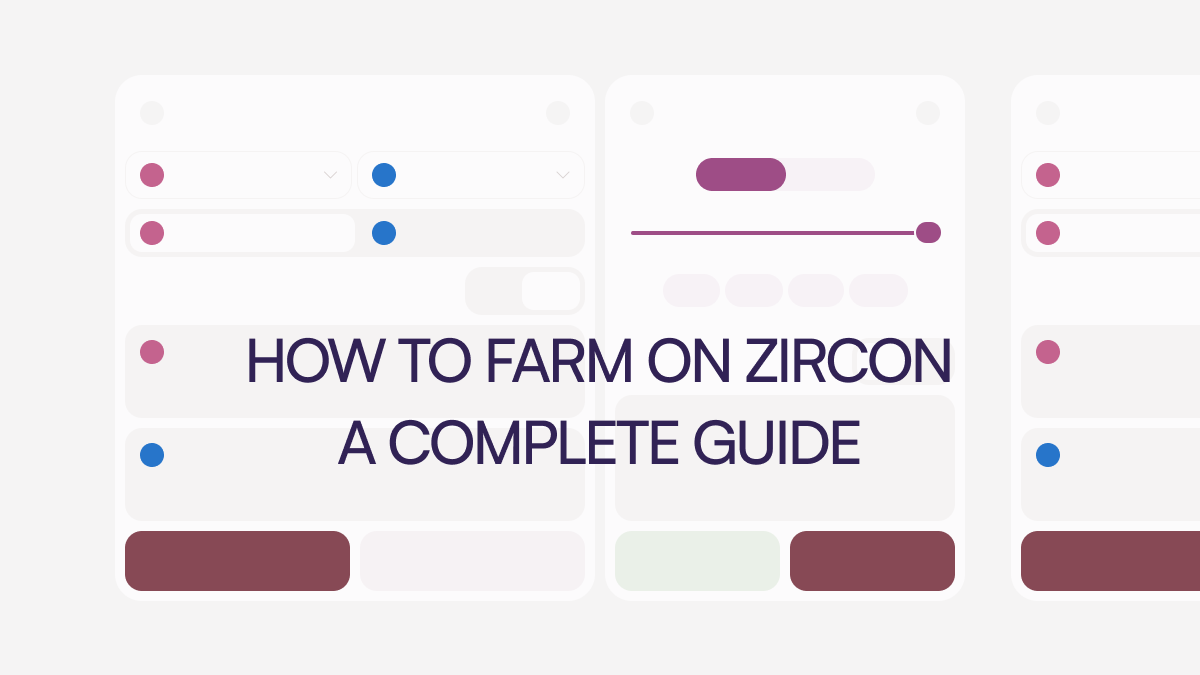How to Farm on Zircon Gamma
A complete guide on how to buy crypto, swap tokens, add them to liquidity pools and farm yield.
We decided to create this guide for our new users who are making their first steps in the DeFi world and Zircon. Crypto isn’t just about Bitcoin, there is an almost infinite number of token on various blockchains that show huge potential.
Here, we present you a complete guide on how to farm ZRG or any other tokens available on Zircon Gamma.
Step 1: Swapping tokens
You might know that liquidity pools on most decentralized exchange contains a pair of tokens. Zircon pools are the same, but with a twist.
Our pools start from having a pair of tokens. But unlike others, we divide them into two separate vaults for farming. One side is called Float, the other is the Stable. To learn more about them click here.
On Zircon you don’t need to provide both in order to start farming, you can farm with just one starting token. This is the beauty of Zircon one-sided liquidity pools. In addition, you also minimize the impermanent loss effect. Click here to read more on that.
So, imagine that you’ve already looked at the pools on Zircon Gamma, checked their APR yields, liquidity available, and other stats crucial for you to make a decision.
Let’s say, you chose to go for the ZRG/USDC pool, the where the Float part is ZRG.
In this case you first need to get ZRG tokens on your Metamask. You can choose any other token from the list to add to a pool, this is just an example!
Don’t forget that the Moonriver blockchain requires you to pay fees in MOVR tokens, so you should get some of them in advance too.
The main issue you can face is bridging the tokens to Moonriver from any other blockchain. It is easily manageable, and in this article we’ve explained how to do it.
Once you have some assets on the Moonriver blockchain you can finally make the first step, i.e., swap the available tokens, such as MOVR or USDC to the one you chose for farming (ZRG in this example).
For your convenience the Zircon team has also prepared video guides that are easy to follow. This video shows how to swap tokens on Zircon.
Step 2 and 3: Adding tokens to a liquidity pool
Congrats, your first step is complete! The next thing to do is to learn how to add the liquidity you swapped to a pool. Again, for the sake of this example we use the ZRG/USDC pool.
In this video example you will see how we add both types of tokens to a pool, but you only need one. Make sure to check the full list of available token pairs and choose whichever you like the most. The only thing to keep in mind is that you should avoid adding your asset to a farm with red indicators, like high divergence for Float or low health factor for Stable.
Divergence is an indicator that shows how much of impermanent loss is in each LP. The lower it is, the better.
To make it simple, we’ve explained the whole path in the following video. Follow Zircon on YouTube to get more useful videos and read on for the next steps.
Step 3 is basically the same thing. The only difference with the previous video is that here we add the stable part to a LP.
Step 4: Start yield farming on Zircon
The moment you add tokens to a pool you get LP tokens back. These represent your share in the vault you chose, and to get your original assets back you need to “burn” these LP tokens. To farm, you have to stake the LP tokens.
The Float LP tokens will be marked with a little “f” while the Stable tokens are going to have an “s” in the beginning, e.g. fZPT or sZPT.
In the following video you will see how to add LP tokens to staking in order to start receiving ZRG & MOVR rewards.
Step 5: Harvesting liquidity
You’ve been holding your LP tokens in staking for a while and now the time has come to harvest the crops. The video below shows how to do it and also explains why sometimes it is required by Zircon to unstake the assets and stake again.
Remember that if you add some more liquidity to a farm where you have some rewards pending, that will automatically send them back to your wallet when you deposit.
Join our community on Twitter, Discord and YouTube and subscribe to the blog.



